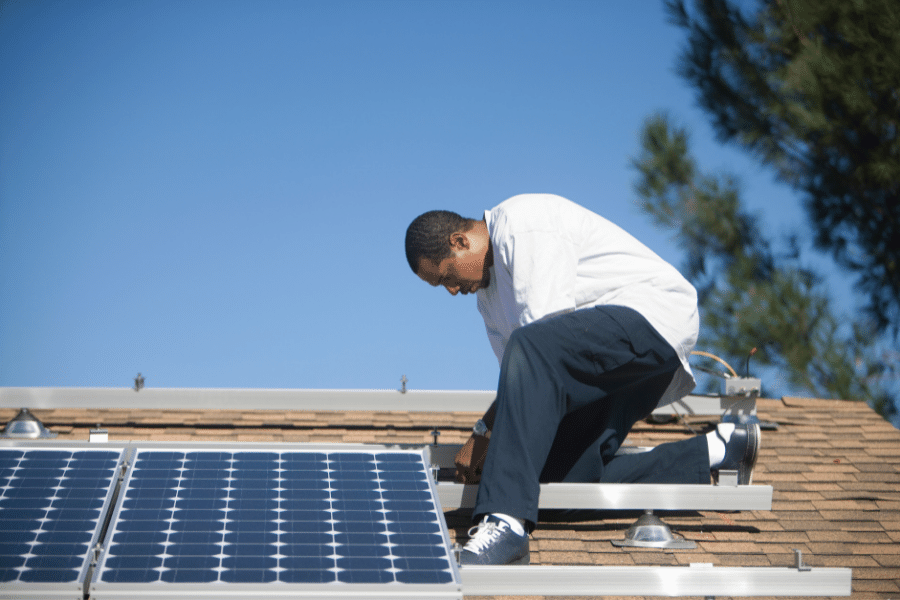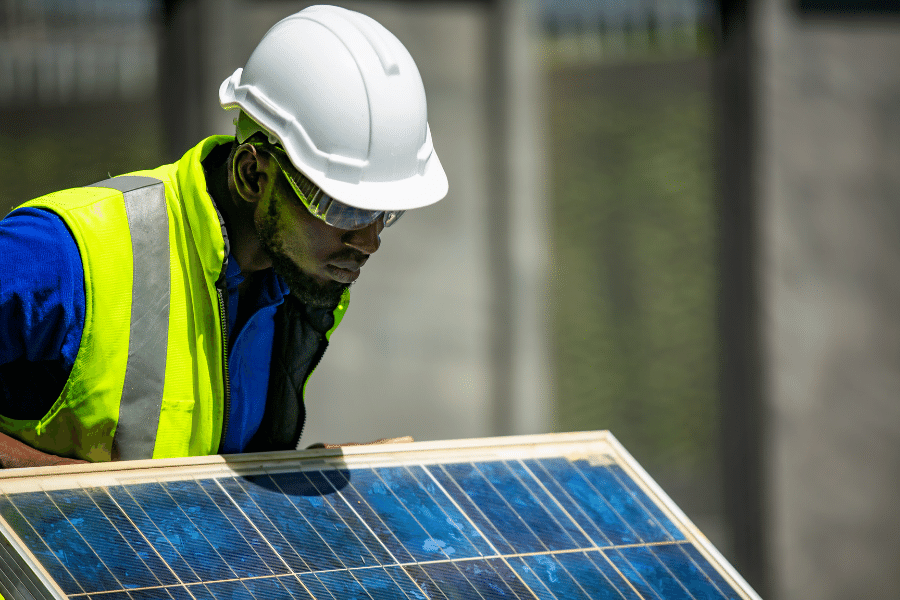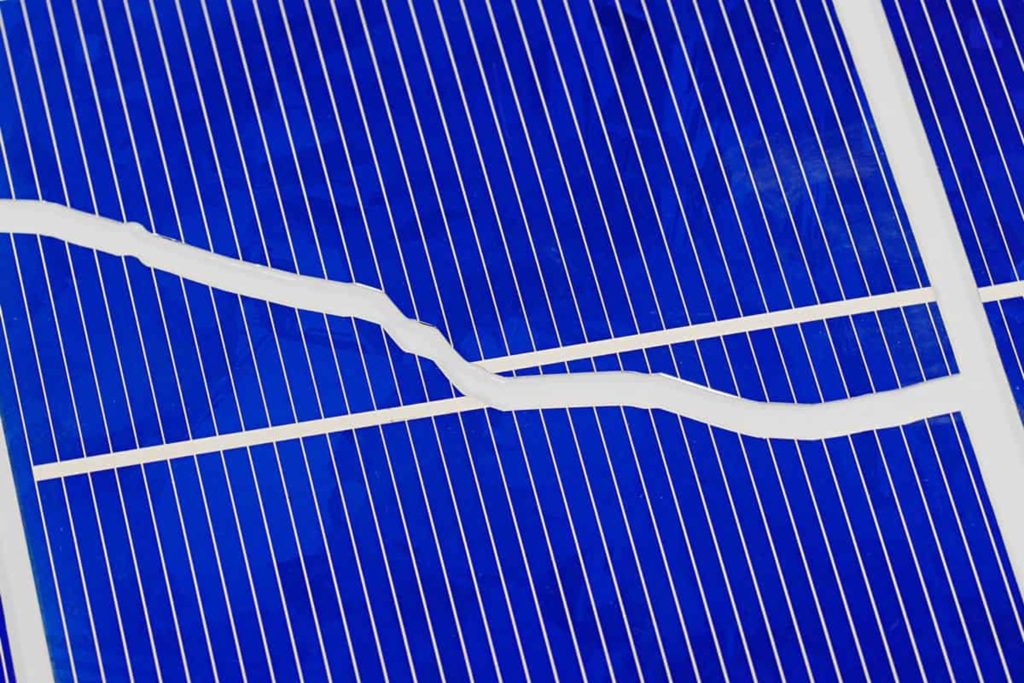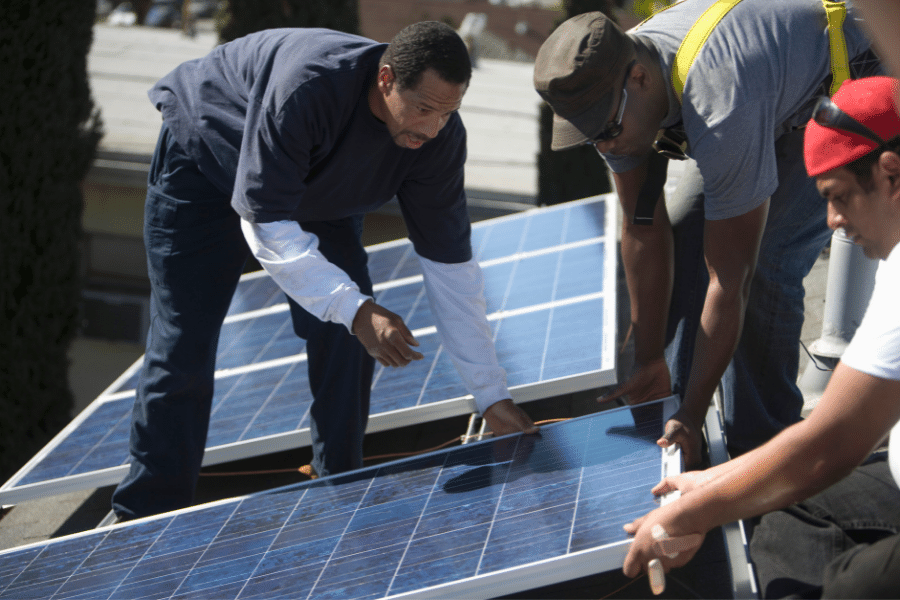5 Tips for Solar Installation Safety
Afraid of heights? Well, you’re not alone, and we understand working on your roof, DIY-installing a solar system, can be a daunting prospect. Nobody wants to be injured while working on the roof, so being careful on your rooftop is essential. Luckily, we have a few valuable tips and tools so you can stay safe while working on your installation.
-
Check Your Footing
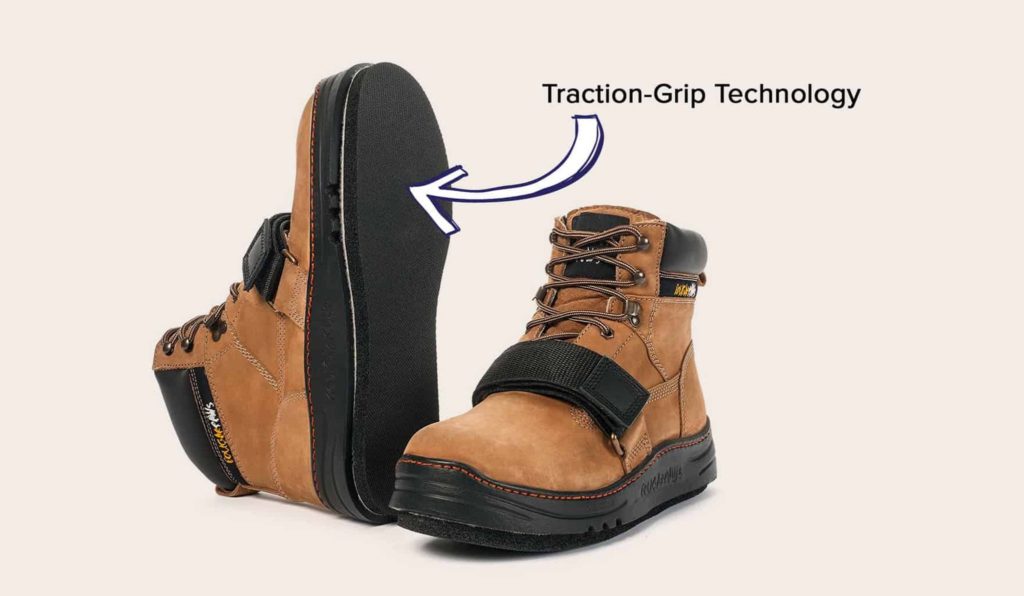
Keeping your footing at a steep angle is a difficult proposition, and doing so while also lifting and setting racking, heavy solar panels, and managing wiring is going to require some extra steps to ensure your safety. However, there are several methods and tools you can use to make certain you stay sure-footed every step of the way.
Footwear
A good pair of roof-ready boots with flat soles that can get a grip on roof shingles, tiles, or metal can make all the difference when you need to stay on your toes above the ground.
- Pros: low cost, easy to use (just wear them!), lifetime usage.
- Cons: help with safety, but no guarantee – boots are only as safe as the feet that wear them.
Rooftop Walkways
Rooftop Walkways are also a unique solution you can look into to save yourself from a spill.
- Pros: Clear pathway where you need it on your roof, nonslip surface for all-weather accessibility.
- Cons: Cost varies from affordable rubber padding to expensive specially-constructed rigging.
Scaffolding
You can also rent scaffolding for easy roof-access, a good safe option.
- Pros: Scaffolding provides a safe, steady access to your roof
- Cons: Setup time
Man-Lift
Renting a man-lift is also a viable option, allowing you to lift heavy loads up to roof height, and have a way to get yourself up to the roof and down to the ground quickly and easily.
- Pros: Affordable temporary rental – no need to install any extra equipment or spend time maintaining/repairing the machinery.
- Cons: Temporary solution, you’ll need to rent one again if you need to reach your roof after the install is done. Man-lifts also require some level of operating experience to use safely.
-
Fall Prevention

Even if you’ve got the right footwear, you can still be worried about a fall. Secure yourself with a Roof Anchor tool, a handy accessory that can keep you safe if you lose your footing – you can install them on your roof for the duration of your solar project, then uninstall them when you’re done. Alternatively, you can install a permanent roof anchor if you expect to be doing a lot of roof work in the future. A Roof Safety Harness is also an essential piece of equipment when working on a sloped roof, and together with a roof anchor forms a complete PPE (Personal Protective Equipment) system for fall-prevention. Watch Roof Anchor Video
-
Electrical Safety

It may sound shocking, but solar panel wiring can give you quite the jolt if you’re not careful! First and foremost, adhere to all local codes, regulations, recommendations and manufacturer’s guidelines when installing your solar system.
Insulated tools and rubber gloves are a must – and you should also be sure to remove any conductive items such as metal jewelry, watches, etc. Electrical safety is one of the most daunting parts of the installation process.
Generally, when you install your solar system and wire it, you’ll leave it disconnected from the power grid before final inspection by an electrician can be completed – this is to ensure everything is copacetic before you flip the switch.
-
Check for Damage

The last thing you want is damaged solar components – not just because you spent money on them, but because damaged wiring and components can spark fires, and damaged or cracked batteries can leak hazardous fumes and battery acid. Upon receiving your freight shipment, the first thing you should do is check for damage.
Most freight shipments are packed as securely as possible, but accidents do happen, and most shipments are insured or otherwise protected to replace or compensate you for deliveries with the broken product.
-
Don’t Do It Alone

“I’ve fallen, and I can’t get up” is something we’ve all heard before, but it’s also something you should keep in mind when you’re working on a project at home.
Larger installation projects can be done with the help of friends and family helping you cut down on install time and taking care of some of the heavy lifting. If you’re installing alone, however, it’s important to make sure that neighbors or friends know you’ll be working on your roof – checking in periodically or expecting to hear from you.
If you fall from your roof or have an accident with heavy equipment, there’s a chance you won’t be able to call the emergency line yourself, so having a backup plan in case of an emergency is important!
These five quick safety tips will ensure you stay safe while installing on a rooftop, so don’t skip over them! Making sure you’ve got the right tools and preparation is essential to a successful installation before you ever set foot on the roof.
Need an installer? Call +234 808 307 3047

